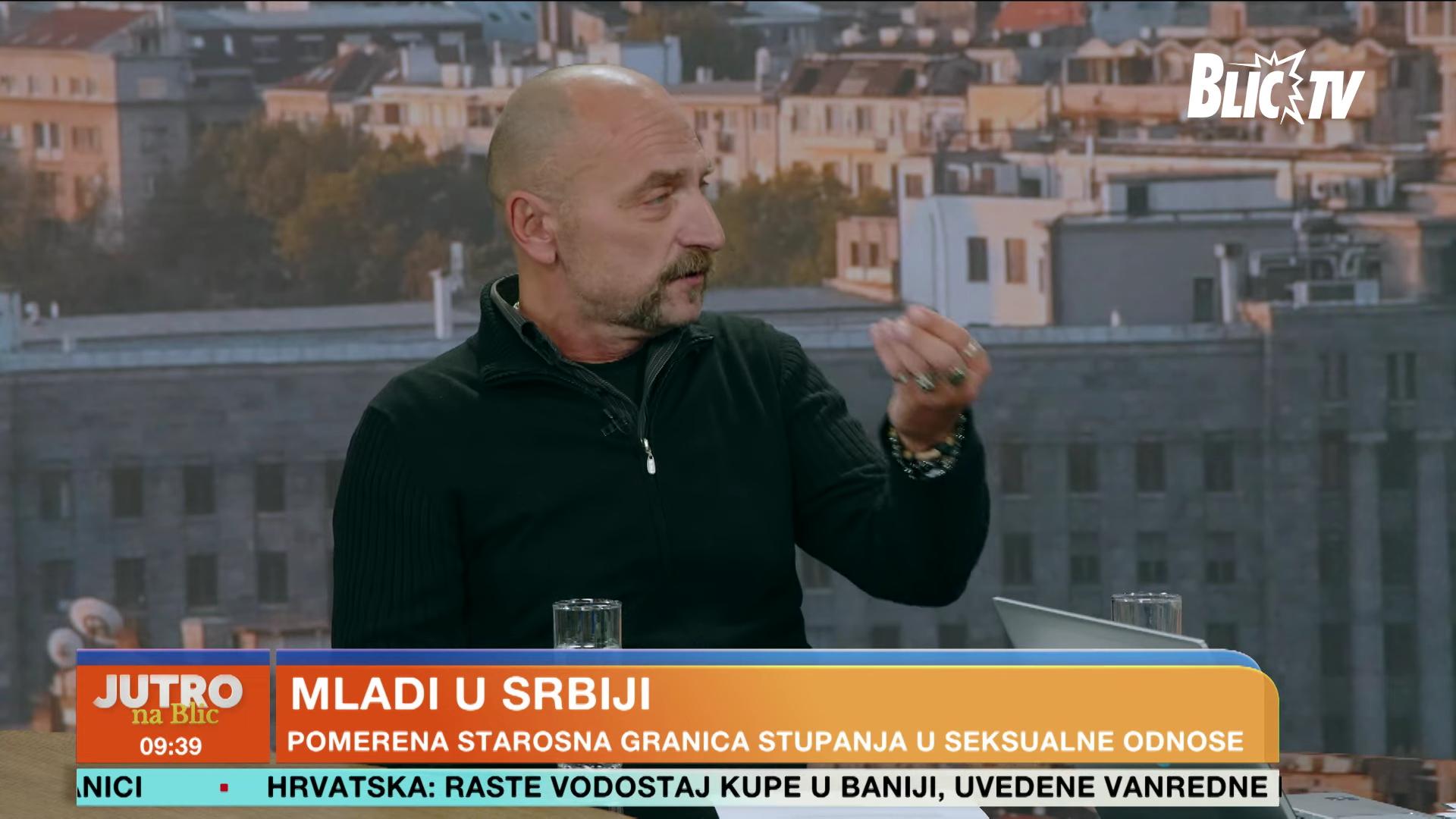Original article (in Serbian) was published on 16/10/2024; Author: Stefan Kosanović
In recent days, many media outlets have sensationally reported the claim that as many as 50 percent of young men in Serbia are asexual. Although some articles have presented this claim as the result of “the latest research”, it is not scientifically substantiated. Instead, it stems from a casual statement made by psychologist Zeljko Masovic, who frequently appears on television in Serbia. Masovic himself admitted to Raskrikavanje that there is no research behind his claim, basing his argument on statements like: “You can walk into any high school and see”. The group “Izadji” which works with LGBTQ+ youth, emphasizes that no large-scale research on this topic has ever been conducted in Serbia and that likely less than one percent of people in the country are asexual.
In yesterday’s edition of the print tabloid Informer, an article was published claiming that as many as 50 percent of young men in Serbia are asexual, citing “the latest research”. The article did not specify which research was being referenced, nor is it possible to find any scientific study to support this claim.
As we have discovered, this claim was first made by psychologist Zeljko Masovic, who frequently appears on television in Serbia, discussing a wide range of topics – from winter depression to the tragedy in Ribnikar.
During an appearance on Blic TV on October 7 of this year, Masovic was invited to a program discussing the delayed onset of sexual activity among young people. At one point, the host asked him what percentage of young people in Serbia are asexual.
“I’ve mentioned this several times, but people don’t take me seriously. Almost 50 percent. Almost every other one, yes. And it’s more common among boys than girls, because girls mature faster”, Masovic confidently replied.
In the following days, this claim became a fact in the domestic media, and the term “young people” in headlines turned into “young men”.
In a rather unusual conversation with a psychologist, a journalist from Raskrikavanje tried to unravel how this significant mistake occurred.
First, Zeljko Masovic admitted to Raskrikavanje that the figure of 50 percent asexual youth in Serbia is not supported by any research.
“That’s my problem – I talk a bit too freely, you know, and then, well, how should I put it, it turns into something it maybe shouldn’t”, we literally quote our interlocutor.
When asked where he got the specific figure of 50 percent, he claimed it was based on his personal experience.
“It’s simple – you can walk into any high school, say hello, and ask who has a boyfriend or girlfriend or both, or a goat, you know?”, Masovic responded inappropriately.
Throughout the conversation, Masovic spoke rather offhandedly about professional issues and the challenges some young people truly face.
When Raskrikavanje’s journalist asked how he defines asexuality, we noticed he equated it with an illness.
“Yes, it’s a disorder, it’s fine, but it’s not like… I mean, when I say someone’s paranoid, I don’t mean they have actual paranoia, you know? But that they’re freaking out, you understand”, Masovic tried to explain his comments.
When further asked if the 50 percent figure was based on his personal definition of asexuality, he again gave a vague response.
“Not by my definition of asexuality, but simply disinterest in the opposite sex, their own sex, or anything. You have kids who are 20 years old and not even interested in porn, nothing, because they’re just fed up with everything, you know? That’s the problem”, Masovic, still using informal language unusual for a psychologist, continued to explain his views.
What is asexuality?
According to the medical web portal Medical News Today, asexuality refers to having little or no interest in sex. Asexual individuals may experience romantic attraction and engage in sexual activities under certain circumstances.
The asexual spectrum includes identities ranging from those who feel no sexual attraction to those who occasionally engage in sexual activity.
Many asexual people form deep relationships, marry, and have children. Asexuality is different from celibacy and abstinence, where the choice is to refrain from acting on sexual attraction.
The Asexual Visibility and Education Network (AVEN) hosts the largest online community of asexual people in the world and an archive of resources on asexuality. They estimate that 1 percent of the global population is asexual.
The Serbian LGBTQ+ group “Izadji” told Raskrikavanje that there is no concrete data on the number of asexual young people in Serbia, as no mass research has been conducted on the topic.
“At most, a vague estimate of the percentage of asexual individuals within the LGBTQ+ population can be provided. Such data would likely conclude that less than 1 percent of people in Serbia are asexual”, said representatives from “Izadji”.
Belgrade Prajd has written about the prejudices and myths surrounding asexuality. They state that the most widely accepted definition of sexuality includes the feeling of attraction, or the absence of attraction, towards a person of a certain sex or gender, and that asexuality is considered a sexual orientation.
They also note that the primary difference between asexual people and those who suffer from hypoactive sexual desire disorders (such as a lack of sexual desire, which can be treated with medication) is that asexual people do not feel discomfort or frustration related to their sexual identity.
Without any verification or questioning of how 50 percent of young people could be asexual, this claim was reported by numerous media outlets and web portals: B92, Blic, Dnevnik, Republika, Direktno and Svi Srbi u Parizu, as well as the print tabloid Informer.



